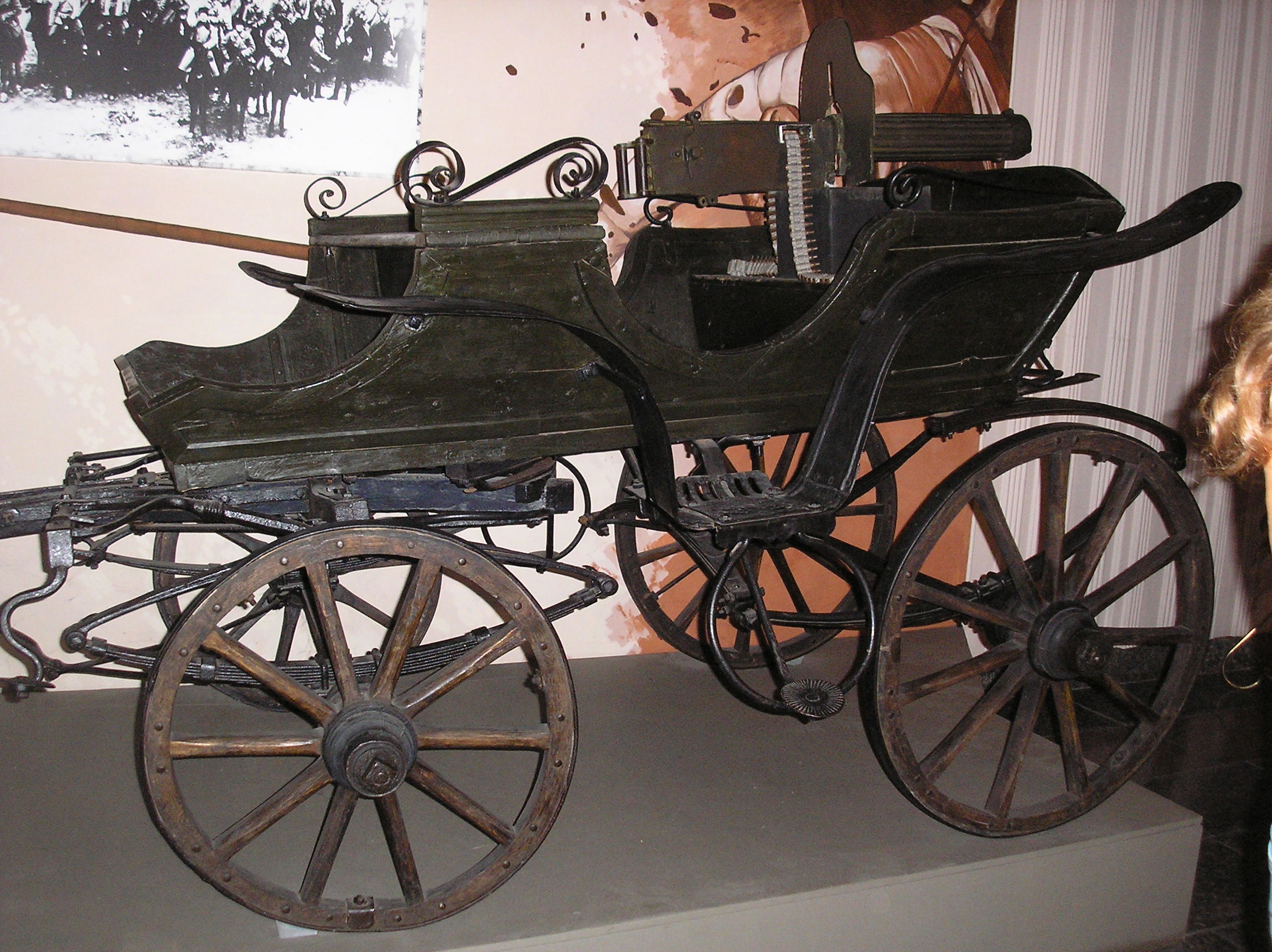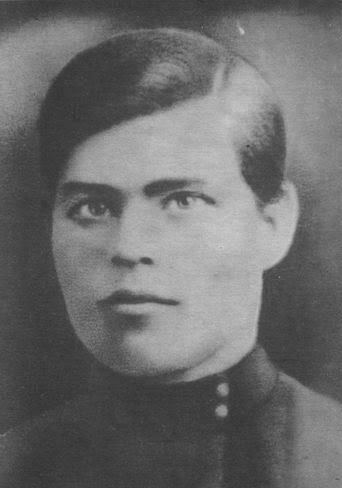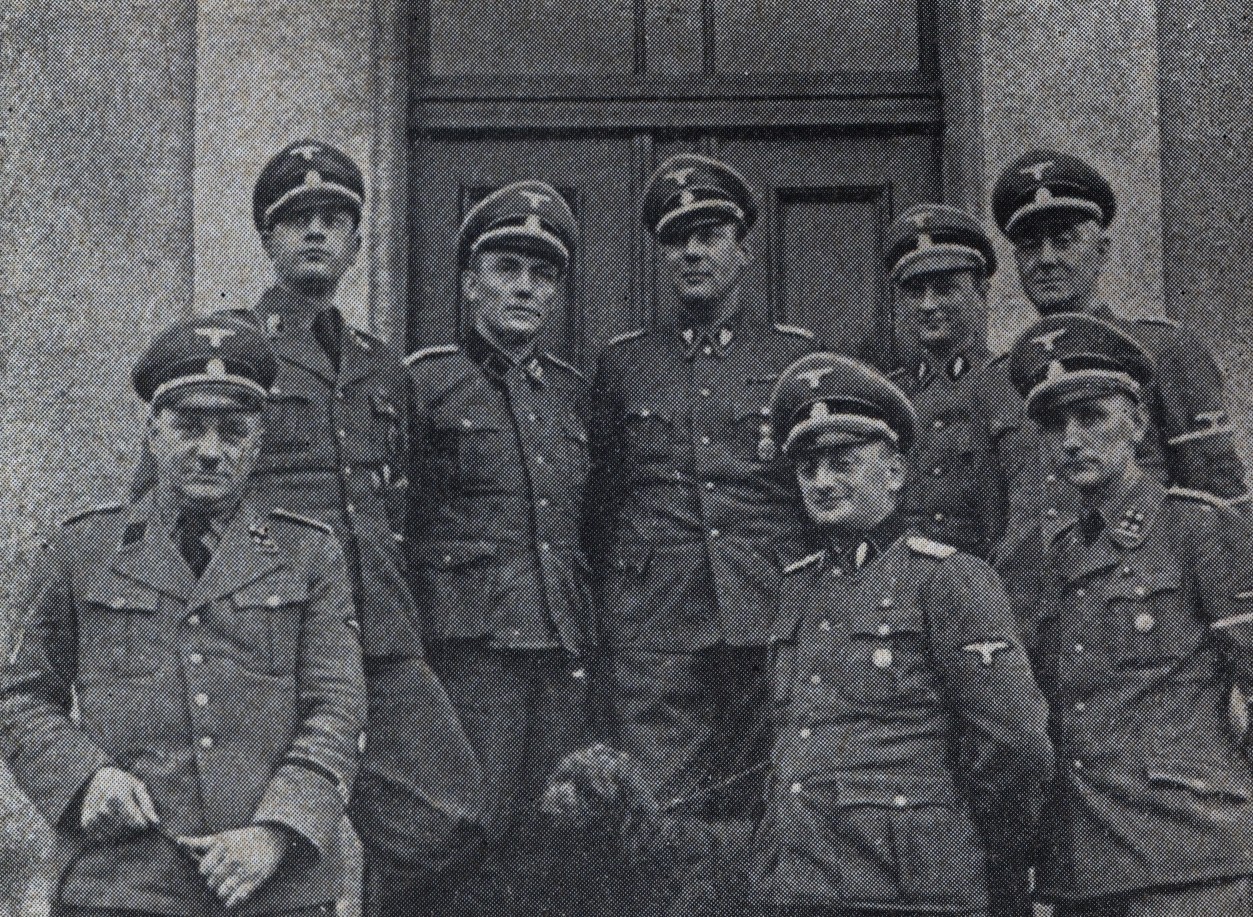|
Makhnovists
The Revolutionary Insurgent Army of Ukraine ( uk, Революційна Повстанська Армія України), also known as the Black Army or as Makhnovtsi ( uk, Махновці), named after their leader Nestor Makhno, was an anarchist army formed largely of Ukrainian peasants and workers during the Russian Civil War of 1917–1922. They protected the operation of "free soviets" and libertarian communes by the Makhnovshchina, an attempt to form a stateless libertarian communist society from 1918 to 1921 during the Ukrainian War of Independence. They were founded and inspired based on the Black Guards. History Background The roots of militant anarchism in Ukraine can be traced back to the activities of the Zaporozhian Cossacks, who established their own "Zaporozhian Sich, free territory" in the Wild Fields, where they practiced a decentralized, democratic and egalitarian mode of organization until their defeat by the Russian Empire at the turn of the 19th ... [...More Info...] [...Related Items...] OR: [Wikipedia] [Google] [Baidu] |
Makhnovshchina
The Makhnovshchina () was an attempt to form a stateless anarchist society in parts of Ukraine during the Russian Revolution of 1917–1923. It existed from 1918 to 1921, during which time free soviets and libertarian communes operated under the protection of Nestor Makhno's Revolutionary Insurgent Army. The area had a population of around seven million. The Makhnovshchina was established with the capture of Huliaipole by Makhno's forces on 27 November 1918. An insurgent staff was set up in the city, which became the territory's ''de facto'' capital. Russian forces of the White movement, under Anton Denikin, occupied part of the region and formed a temporary government of Southern Russia in March 1920, resulting in the ''de facto'' capital being briefly moved to Katerynoslav (modern-day Dnipro). In late March 1920, Denikin's forces retreated from the area, having been driven out by the Red Army in cooperation with Makhno's forces, whose units conducted guerrilla warfare beh ... [...More Info...] [...Related Items...] OR: [Wikipedia] [Google] [Baidu] |
Nestor Makhno
Nestor Ivanovych Makhno, The surname "Makhno" ( uk, Махно́) was itself a corruption of Nestor's father's surname "Mikhnenko" ( uk, Міхненко). ( 1888 – 25 July 1934), also known as Bat'ko Makhno ("Father Makhno"),; According to Alexandre Skirda, the term ''Bat'ko'' had been used by the Zaporozhian Cossacks as an honorific for elected military leaders. As Makhno was still quite young when he was given the name ''Bat'ko'' by his detachment, the literal translation of "father" may not be entirely accurate, as the term is not exclusively used in a paternal sense. Makhno was also not the only person with the title of ''Bat'ko'' in Ukraine, there were even some other ''Bat'kos'' within the ranks of the Makhnovshchina. was a Ukrainian anarchist revolutionary and the commander of the Revolutionary Insurgent Army of Ukraine during the Ukrainian Civil War. Makhno was the namesake of the Makhnovshchina (loosely translated as "Makhno movement"), a predominantly peasant ... [...More Info...] [...Related Items...] OR: [Wikipedia] [Google] [Baidu] |
Viktor Bilash
Viktor Fedorovych Bilash ( uk, Віктор Федорович Білаш; 1893 – 24 January 1938) was the Chief of Staff of the Revolutionary Insurgent Army of Ukraine (RIAU) under Nestor Makhno. A gifted military commander, Bilash himself planned many of the Insurgent Army's operations, later becoming its commander in chief after Makhno's flight into exile. His son, Oleksandr, a World War II veteran, was able to obtain the manuscript of his father's work, with other previously unknown documents in 1993. He subsequently published it together as a book called “The Roads of Nestor Makhno”. Biography Viktor Bilash was born in the small Pryazovian town of Novospasivka, where he worked as a train driver during his youth. During the early months of the Ukrainian War of Independence, the Austro-Hungarian Army shot Viktor's father, grandfather and cousin, and even set his house on fire, in reprisal for Bilash having joined the partisan movement against the Central Powers. Rise ... [...More Info...] [...Related Items...] OR: [Wikipedia] [Google] [Baidu] |
Battle For The Donbas (1919)
The Battle for Donbas was a military campaign of the Russian Civil War that lasted from January to May 1919, in which White forces repulsed attacks of the Red Army on the Don Host Oblast and occupied the Donbas region after heavy fighting. After the army of the Ukrainian People's Republic was pushed out of Kharkiv and Kyiv and the Ukrainian Socialist Soviet Republic was established, in March 1919 the Red Army attacked the central part of Donbas, which had been abandoned by the Imperial German Army in November 1918 and subsequently occupied by the White Volunteer Army. Its aim was to control strategically located and economically important territories, which would enable a further advance towards Crimea, the Sea of Azov and the Black Sea. After heavy fights, fought with variable luck, it took over key centers in this area ( Yuzivka, Luhansk, Debaltseve, Mariupol) until the end of March, when it lost them to the Whites led by Vladimir May-Mayevsky. On April 20, the front stretc ... [...More Info...] [...Related Items...] OR: [Wikipedia] [Google] [Baidu] |
Anarcho-communism
Anarcho-communism, also known as anarchist communism, (or, colloquially, ''ancom'' or ''ancomm'') is a political philosophy and anarchist school of thought that advocates communism. It calls for the abolition of private property but retains respect for personal property and collectively-owned items, goods, and services. It supports social ownership of property and direct democracy among other horizontal networks for the allocation of production and consumption based on the guiding principle "From each according to his ability, to each according to his needs". Some forms of anarcho-communism, such as insurrectionary anarchism, are strongly influenced by egoism and radical individualism, believing anarcho-communism to be the best social system for realizing individual freedom."T ... [...More Info...] [...Related Items...] OR: [Wikipedia] [Google] [Baidu] |
Selbstschutz
''Selbstschutz'' (German for "self-protection") is the name given to different iterations of ethnic-German self-protection units formed both after the First World War and in the lead-up to the Second World War. The first incarnation of the ''Selbstschutz'' was a German paramilitary organisation formed after World War I for ethnic Germans who lived outside Germany in the territories occupied by Germany and Austria-Hungary following the conclusion of the Treaty of Brest-Litovsk. The purpose of these units was to protect local ethnic-German communities and, indirectly, to serve German security interests in southern Ukraine. Another iteration of the ''Selbstschutz'' concept was established in Silesia and aimed at returning Polish-inhabited territories back to Germany following the rebirth of Poland. In 1921, the units of ''Selbstschutz'' took part in the fights against the Polish Third Silesian Uprising. The third incarnation operated in territories of Central and Eastern Europe befor ... [...More Info...] [...Related Items...] OR: [Wikipedia] [Google] [Baidu] |
Semen Karetnyk
Semen Mykytovych Karetnyk (; 1893 – 1920) was a Ukrainian anarchist and a commander of the Revolutionary Insurgent Army of Ukraine (RIAU). He often replaced Nestor Makhno as supreme commander of the Black Army in 1920. Karetnyk gained a reputation for his central role in defeating the White Army in Crimea in November 1920. Biography Semen Karetnyk was born into extreme poverty, growing up a poor peasant in the small southern Ukrainian town of Huliaipole. He worked as a hostler until the outbreak of World War I, upon which he was drafted into military service and worked his way through the ranks until he became an ensign. By the time of the Russian Revolution, Karetnyk had gained much military experience, which he utilized upon his return to Ukraine, when he became a leading partisan of the Makhnovshchina. Karetnyk's strong anarchist convictions brought him into the favor of the local revolutionary leader Nestor Makhno, with Karetnyk going on to become the second-in-command of t ... [...More Info...] [...Related Items...] OR: [Wikipedia] [Google] [Baidu] |
Fedir Shchus
Fedir Shchus ( uk, Федір Щусь, 25 March 1893 – 30 June 1921), also Fyodor Shuss or Feodosiy Shchus, was a commander (ataman) in the Revolutionary Insurgent Army of Ukraine of Nestor Makhno. Biography Fedir Shchus was born into a poor peasant family in the small Ukrainian village of Dibrivka. In 1915 he was conscripted into the military service and enlisted in the navy as a seaman on the Ioann Zlatoust, a battleship in the Black Sea Fleet. He did a lot of sports in the Navy, was a champion in French boxing and wrestling, and knew jiu-jitsu well, he was able to defeat any opponent with a quick capture without much stress. He returned to his home town after the Revolution, where he established a partisan band known as the "Black Guards" in order to wage guerrilla warfare against the local nobility. Shchus believed that because of the abdication of Nicholas II, landowners no longer had any right to their lands, as the Tsarist legal system that upheld their private pro ... [...More Info...] [...Related Items...] OR: [Wikipedia] [Google] [Baidu] |
Austria-Hungary
Austria-Hungary, often referred to as the Austro-Hungarian Empire,, the Dual Monarchy, or Austria, was a constitutional monarchy and great power in Central Europe between 1867 and 1918. It was formed with the Austro-Hungarian Compromise of 1867 in the aftermath of the Austro-Prussian War and was dissolved shortly after its defeat in the First World War. Austria-Hungary was ruled by the House of Habsburg and constituted the last phase in the constitutional evolution of the Habsburg monarchy. It was a multinational state and one of Europe's major powers at the time. Austria-Hungary was geographically the second-largest country in Europe after the Russian Empire, at and the third-most populous (after Russia and the German Empire). The Empire built up the fourth-largest machine building industry in the world, after the United States, Germany and the United Kingdom. Austria-Hungary also became the world's third-largest manufacturer and exporter of electric home appliances, ... [...More Info...] [...Related Items...] OR: [Wikipedia] [Google] [Baidu] |
Ukrainian State
The Ukrainian State ( uk, Українська Держава, translit=Ukrainska Derzhava), sometimes also called the Second Hetmanate ( uk, Другий Гетьманат, translit=Druhyi Hetmanat, link=no), was an anti-Bolshevik government that existed on most of the modern territory of Ukraine (except for Western Ukraine) from 29 April to 14 December 1918. It was installed by German military authorities after the socialist-leaning Central Council of the Ukrainian People's Republic was dispersed on 28 April 1918. Ukraine turned into a provisional dictatorship of Hetman of Ukraine Pavlo Skoropadskyi, who outlawed all socialist-oriented political parties, creating an anti-Bolshevik front with the Russian State. It collapsed in December 1918, when Skoropadskyi was deposed and the Ukrainian People's Republic returned to power in the form of the Directorate. Geography The country lay in Eastern Europe along the middle and lower sections of the Dnieper on the coast of the B ... [...More Info...] [...Related Items...] OR: [Wikipedia] [Google] [Baidu] |
Russian Civil War
, date = October Revolution, 7 November 1917 – Yakut revolt, 16 June 1923{{Efn, The main phase ended on 25 October 1922. Revolt against the Bolsheviks continued Basmachi movement, in Central Asia and Tungus Republic, the Far East through the 1920s and 1930s.{{cite book, last=Mawdsley, first=Evan, title=The Russian Civil War, location=New York, publisher=Pegasus Books, year=2007, isbn=9781681770093, url=https://archive.org/details/russiancivilwar00evan, url-access=registration{{rp, 3,230(5 years, 7 months and 9 days) {{Collapsible list , bullets = yes , title = Peace treaties , Treaty of Brest-LitovskSigned 3 March 1918({{Age in years, months, weeks and days, month1=11, day1=7, year1=1917, month2=3, day2=3, year2=1918) , Treaty of Tartu (Russian–Estonian)Signed 2 February 1920({{Age in years, months, weeks and days, month1=11, day1=7, year1=1917, month2=2, day2=2, year2=1920) , Soviet–Lithuanian Peace TreatySigned 12 July 1920({{Age in years, months, weeks and da ... [...More Info...] [...Related Items...] OR: [Wikipedia] [Google] [Baidu] |







